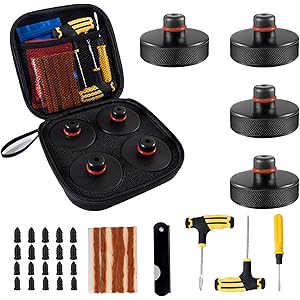As a proud mobile homeowner, I understand the importance of maintaining every aspect of my home, including the often-overlooked skirting. It not only enhances the aesthetic appeal of your home but also serves essential functions like insulation and pest control. In this article, I’ll share my journey of repairing mobile home skirting, offer expert tips, and guide you through a successful DIY project that can transform your home. Let’s dive into this rewarding endeavor together!
Understanding Mobile Home Skirting
Before we jump into the repair process, it’s crucial to understand what mobile home skirting is and why it matters. Skirting is the material that encloses the space between the ground and the bottom of your home. It serves several purposes:
- Insulation: It helps to insulate the underbelly of your home, keeping it warmer in winter and cooler in summer.
- Pest Control: A solid skirting prevents pests from entering your home, protecting your living space from unwanted guests.
- Aesthetic Appeal: It enhances the overall look of your mobile home, giving it a finished appearance.
- Foundation Protection: Proper skirting protects your home’s foundation from water damage and erosion.
With these vital functions in mind, let’s explore the common issues that can arise with mobile home skirting and how to address them effectively.
Common Issues with Mobile Home Skirting
Throughout my experience, I’ve encountered several common problems with mobile home skirting. Here are some of the issues you might face:
- Cracks and Breaks: Over time, skirting can become brittle and crack due to exposure to the elements.
- Loose Panels: Wind and shifting ground can cause skirting panels to become loose or detach entirely.
- Water Damage: Improper drainage or flooding can lead to water damage, resulting in mold and mildew.
- Pest Infestations: Gaps and holes can invite pests like rodents and insects into your home.
Identifying these issues early can save you time and money in repairs. Now, let’s move on to how I successfully tackled my skirting repair project!
Assessing the Damage
The first step in repairing mobile home skirting is to assess the damage thoroughly. Here’s how I went about it:
- Visual Inspection: I walked around my home, inspecting the skirting for any visible cracks, gaps, or loose panels.
- Check for Moisture: I used a moisture meter to check for water damage, especially after heavy rains.
- Pest Inspection: I looked for signs of pests, such as droppings or nests, to determine if I needed to address any infestations.
By taking a comprehensive look at the skirting, I could create a clear plan for repairs.
Gathering the Right Materials
Once I assessed the damage, it was time to gather the necessary materials for the repair. Here’s a list of what I found essential for my project:
- Replacement Skirting Panels: Depending on the damage, I purchased new panels that matched the existing skirting.
- Fasteners and Adhesives: I stocked up on screws, nails, and construction adhesive for securing the panels.
- Tools: I gathered my tools, including a saw, drill, measuring tape, and safety gear.
- Sealants: I bought sealants to fill any gaps and prevent moisture ingress.
Having the right materials on hand made the repair process much smoother and more efficient.
Step-by-Step Repair Process
Now that I had everything I needed, I was ready to get to work! Here’s a step-by-step guide to repairing mobile home skirting:
Step 1: Remove Damaged Panels
The first step was to carefully remove any damaged skirting panels. I used a pry bar to gently lift them off, being careful not to damage adjacent panels.
Step 2: Prepare the Area
Next, I cleaned the area where the new panels would be installed. I removed debris, dirt, and any remnants of the old adhesive to ensure a solid foundation.
Step 3: Measure and Cut New Panels
With the area prepped, I measured the dimensions of the new panels needed. Using a saw, I cut the replacement panels to size, ensuring they fit snugly into place.
Step 4: Install New Panels
After cutting the panels, it was time to install them. I applied construction adhesive along the edges and secured them with screws, ensuring they were level and flush with the surrounding skirting.
Step 5: Seal Gaps and Joints
To prevent moisture intrusion and pest access, I used sealants to fill any gaps or joints. This added an extra layer of protection to my newly installed skirting.
Step 6: Final Inspection
Finally, I stepped back and inspected my work. I ensured all panels were secure, gaps were sealed, and the skirting looked cohesive. I was proud of the transformation!
Maintenance Tips for Longevity
After completing my skirting repair, I wanted to ensure it would last for years to come. Here are some maintenance tips I found helpful:
- Regular Inspections: I committed to conducting routine inspections of my skirting, checking for any signs of damage or wear.
- Keep the Area Clean: I ensured the area around my skirting was free of debris and vegetation to prevent moisture buildup.
- Address Issues Promptly: If I noticed any damage or pest activity, I addressed it immediately to prevent further complications.
- Consider Upgrades: I looked into upgrading to more durable skirting materials, such as vinyl or metal, for added longevity.
By following these maintenance tips, I’m confident my skirting will continue to protect my home for years to come.
Cost Considerations
One of the first questions I had when considering my skirting repair was about cost. Here’s a breakdown of what I discovered:
- Material Costs: Depending on the material chosen, skirting panels can range from $10 to $30 per panel.
- Tools and Supplies: If you don’t already own tools, budget an additional $100 to $200 for purchasing or renting them.
- Professional Help: If you choose to hire a professional, labor costs can vary widely, typically ranging from $50 to $100 per hour.
For my DIY project, I spent approximately $300 on materials and tools, significantly less than hiring a professional. This experience not only saved me money but also gave me a sense of accomplishment.
Case Study: A Successful Transformation
To illustrate the impact of skirting repair, let me share a case study of a friend, Sarah, who lives in a neighboring mobile home park. Sarah had been struggling with pest issues and unsightly skirting. After following the tips I shared with her, she was amazed at the transformation:
- Before: Her skirting was damaged, with visible gaps, and she frequently dealt with pest infestations.
- After: After repairing her skirting, she noticed a significant reduction in pests and an immediate improvement in the overall appearance of her home.
- Added Value: Sarah’s home value increased, and she felt proud of her living space.
Her experience reinforced the importance of skirting repair and the difference it can make in a mobile home.
Frequently Asked Questions (FAQ)
1. How often should I inspect my mobile home skirting?
I recommend inspecting your skirting at least twice a year, especially after severe weather events. This ensures you catch any damage early on.
2. What materials are best for mobile home skirting?
Vinyl and metal are popular choices due to their durability and low maintenance. However, consider your budget and aesthetic preferences when choosing materials.
3. Can I repair my skirting myself?
Absolutely! With the right tools and materials, many homeowners can successfully repair their skirting without professional help. Just follow the steps outlined in this article.
4. How can I prevent pests from entering through the skirting?
Ensure all gaps are sealed and consider using materials that are less attractive to pests. Regular inspections are key to preventing infestations.
5. Is it worth it to upgrade my skirting?
Yes! Upgrading to more durable materials can save you money in the long run by reducing maintenance and repair needs.
Conclusion
Repairing mobile home skirting is a rewarding DIY project that can significantly enhance the appearance and functionality of your home. By understanding the importance of skirting, assessing damage, and following a step-by-step repair process, I transformed my mobile home and saved money in the process. With the right maintenance, I’m confident my skirting will last for years.
I encourage you to take on this project, as it not only improves your home’s aesthetics but also protects it from the elements and pests. If you found this article helpful, please share it with friends and family! Don’t forget to sign up for our newsletter for more DIY tips and home improvement ideas. Together, let’s create beautiful and functional living spaces!
Tesla Jack Pads Lifting Jack Pad for Tesla Model 3/Y/S/X Tesla Pucks Accessories with Tire Repair Tools Kit for Tesla Vehicles 2016 to 2026,4 Pucks with Storage Case
$16.99 (as of November 15, 2025 07:52 GMT -03:00 - More infoProduct prices and availability are accurate as of the date/time indicated and are subject to change. Any price and availability information displayed on [relevant Amazon Site(s), as applicable] at the time of purchase will apply to the purchase of this product.)
Sign up for our newsletter and stay up to date with exclusive news
that can transform your routine!





